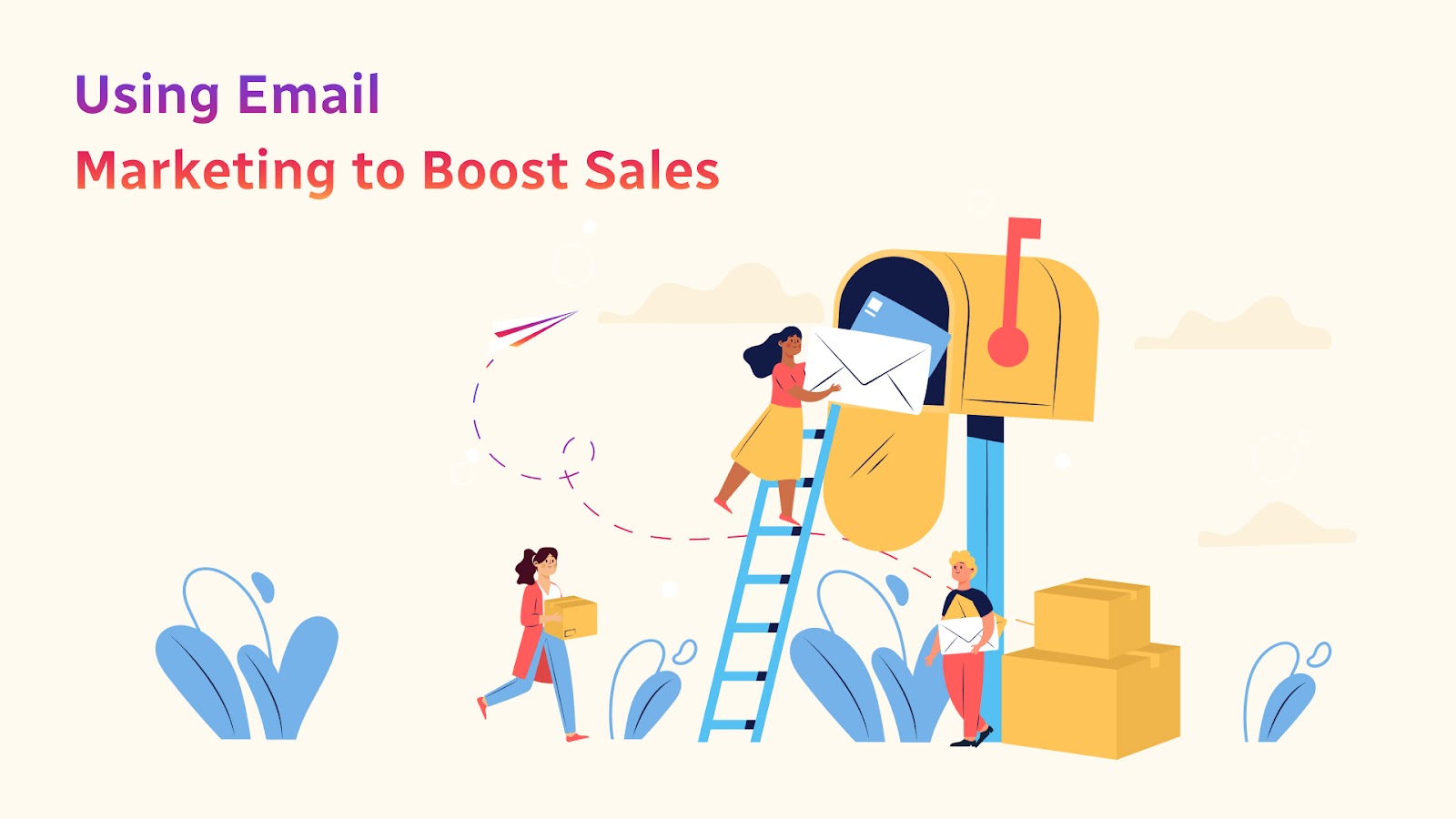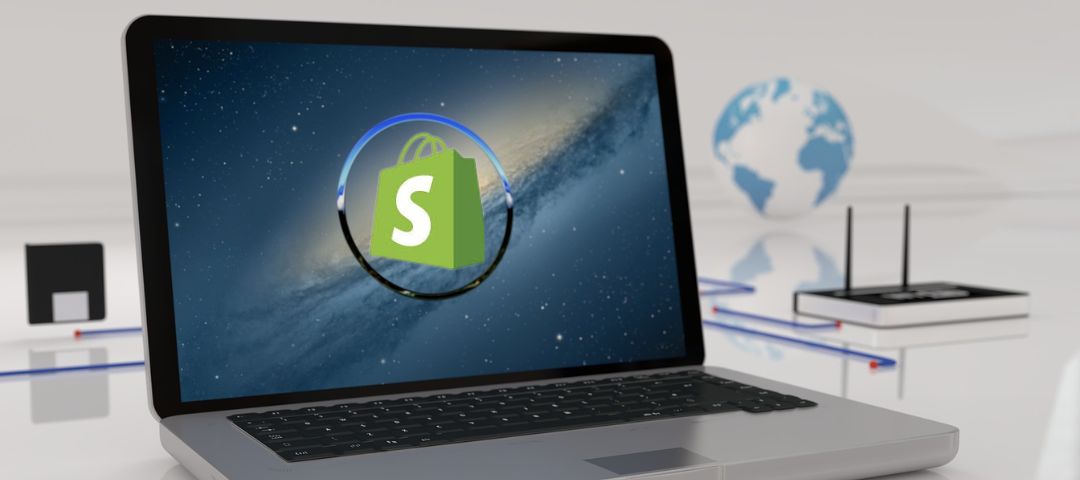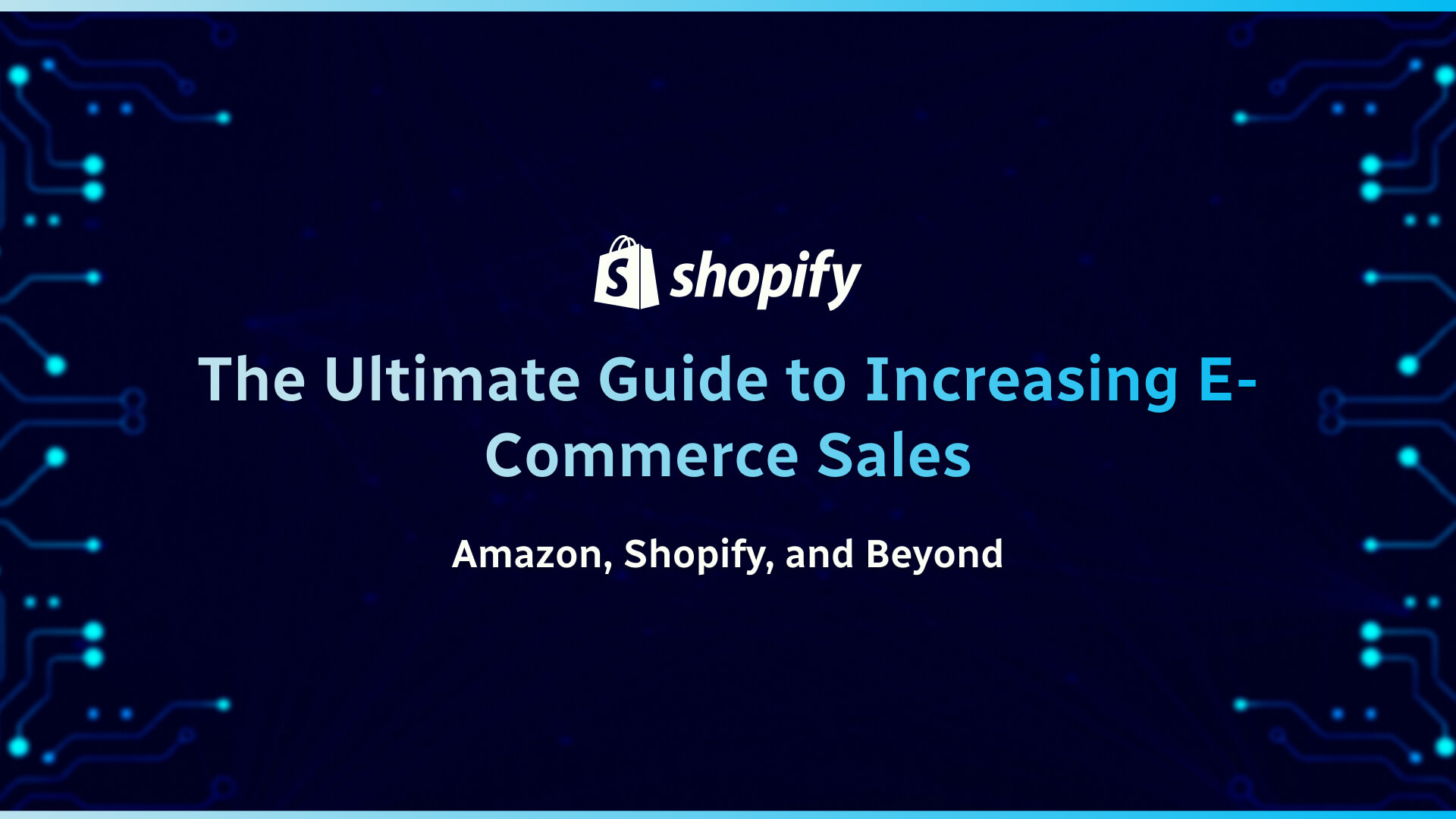- Table of Contents
- Introduction
- Understanding Your Target Market
- Optimizing Your Website for Sales
- Leveraging Social Media for Sales
- Using Email Marketing to Boost Sales
- Selling on Amazon
- Using Shopify for E-Commerce Sales
- Other Strategies for Increasing E-Commerce Sales
- Conclusion
Introduction
In today’s digital age, e-commerce has become an increasingly important part of many businesses’ sales strategies. With the rise of online shopping and the convenience it provides, more and more customers are turning to e-commerce platforms to make their purchases. This means that businesses that don’t have a strong online presence risk losing out on potential customers and revenue.
Increasing e-commerce sales is therefore crucial for online businesses that want to stay competitive and grow their customer base. By implementing effective sales strategies and optimizing their online presence, businesses can attract more customers, increase their revenue, and ultimately achieve long-term success in the e-commerce space. Additionally, by increasing e-commerce sales, businesses can also improve their brand reputation and strengthen customer loyalty, which can lead to even more sales in the future.
The ultimate guide to increasing e-commerce sales is a detailed article that covers various tips and strategies that businesses can implement to boost their online sales. The article will cover a range of topics including how to identify target markets, optimize websites for sales, leverage social media, email marketing, sell on Amazon, use Shopify for e-commerce sales, and other unique strategies for increasing sales.
Throughout the article, there will be examples of successful e-commerce businesses that have implemented these strategies effectively and achieved remarkable results. The article aims to provide readers with a comprehensive understanding of the various strategies and best practices that can be implemented to increase e-commerce sales and stay ahead of competitors in the online marketplace.
The benefits of using Shopify and Amazon for e-commerce sales
Shopify and Amazon are two of the most popular e-commerce platforms available today, and each offers a unique set of benefits for online sellers.
Shopify is a comprehensive e-commerce solution that allows you to easily set up and manage your online store. It offers a user-friendly interface, flexible customization options, and a wide range of built-in features and apps to help you manage everything from product listings and inventory management to shipping and payments. With Shopify, you can create a fully customizable online store that reflects your brand and offers a seamless shopping experience for your customers.
On the other hand, Amazon is a massive online marketplace that offers unparalleled access to millions of potential customers around the world. By listing your products on Amazon, you can tap into a massive customer base, take advantage of Amazon’s robust fulfillment network, and benefit from its powerful search and recommendation algorithms. Amazon also offers a range of marketing and advertising tools to help you reach more customers and boost your sales.
Overall, both Shopify and Amazon can offer significant benefits for e-commerce sellers, depending on your specific needs and goals. While Shopify is ideal for creating a fully customizable online store, Amazon offers access to a massive customer base and a range of powerful marketing and fulfillment tools. By carefully considering your options and choosing the platform that best fits your business, you can maximize your sales and achieve long-term success in the world of e-commerce.
Understanding Your Target Market

Importance of understanding your target market
Understanding your target market is crucial for any business looking to increase e-commerce sales. Your target market comprises the specific group of people who are most likely to purchase your products or services. By identifying and understanding your target market, you can tailor your sales strategies to meet their specific needs and preferences.
Knowing your target market enables you to optimize your website for sales by creating relevant and targeted content that appeals to them. It also allows you to choose the right social media platforms to reach your target audience and develop personalized email campaigns that speak to their interests and motivations.
Moreover, understanding your target market can help you identify new opportunities for growth and expansion. By analyzing the demographics, behaviors, and buying patterns of your target market, you can identify new niches and customer segments that you can tap into.
How to identify your target market
Identifying your target market is an important step in increasing e-commerce sales. Here are some ways to identify your target market:
- Define your product or service: Start by defining the product or service that your business offers. Determine the features, benefits, and unique selling points that set your product or service apart from the competition.
- Conduct market research: Conduct market research to gather data on your potential customers. This can include demographics such as age, gender, income, education level, and geographic location. You can also gather information on their interests, behaviors, and purchasing habits.
- Analyze your competitors: Analyze your competitors to understand their target market and identify any gaps in the market that you can capitalize on.
- Create buyer personas: Based on your market research, create buyer personas that represent your ideal customers. A buyer persona is a detailed profile that includes information such as age, gender, job title, income, interests, and buying habits.
- Test and refine your target market: Once you have identified your target market, test and refine your strategies to see what works best. Use analytics tools to track website traffic, engagement, and sales to see how your target market responds to your marketing efforts.
Tips for conducting market research

Conducting market research is a critical step in identifying your target market and developing effective sales strategies. Here are some tips for conducting market research:
- Identify your research goals: Start by defining your research goals and objectives. Determine what you want to achieve through your research and the questions you need to answer.
- Use a variety of methods: Use a mix of qualitative and quantitative research methods to gather data. Qualitative methods such as focus groups and interviews provide in-depth insights into customer needs and preferences, while quantitative methods such as surveys and data analysis can provide statistical data on customer behavior and trends.
- Define your target audience: Be clear about the target audience for your research. Determine the demographic and psychographic characteristics of the customers you want to reach, and tailor your research methods accordingly.
- Use online tools: Online tools such as Google Trends, social media listening tools, and online surveys can provide valuable insights into customer behavior and trends.
- Analyze the competition: Analyze your competition to understand its target market and identify any gaps in the market that you can capitalize on.
- Use secondary sources: Use secondary sources such as industry reports, government data, and academic research to gather additional data and insights.
- Stay organized: Keep detailed records of your research findings and use them to inform your sales strategies.
Optimizing Your Website for Sales
The Importance of Website Design for e-commerce sales
Website design plays a crucial role in e-commerce sales. A well-designed website can significantly impact the user experience, customer engagement, and overall sales conversion rates. Here are some reasons why website design is important for e-commerce sales:
- User experience: A well-designed website provides a positive user experience and makes it easy for customers to navigate, find the products they are looking for, and complete their purchases.
- Brand identity: The design of your website can help establish and reinforce your brand identity, making your business more recognizable and memorable to customers.
- Credibility: A professional-looking website design can help build credibility and trust with customers, increasing the likelihood of them making a purchase.
- Mobile responsiveness: With more and more customers accessing e-commerce sites on their mobile devices, a website design that is mobile-responsive is crucial for maximizing sales opportunities.
- Search engine optimization: A website design that is optimized for search engines can help improve your search engine rankings, making it easier for potential customers to find your site and products.
- Product presentation: An effective website design can help showcase your products in an attractive and engaging way, leading to increased customer interest and sales.
Tips for optimizing your website for sales

Optimizing your website for sales is crucial for maximizing revenue and growing your e-commerce business. Here are some tips for optimizing your website for sales:
- Simplify navigation: Ensure that your website’s navigation is simple and easy to use. Make it easy for customers to find the products they are looking for by providing clear categories, search filters, and a prominent search bar.
- Optimize product pages: Product pages are crucial for sales. Optimize your product pages by providing clear and concise product descriptions, high-quality product images, customer reviews, and clear call-to-actions for purchasing.
- Offer personalized recommendations: Use customer data to offer personalized recommendations based on their browsing and purchasing history. This can help increase engagement and drive additional sales.
- Optimize the checkout process: The checkout process should be simple, streamlined, and easy to use. Avoid requiring customers to create an account to purchase and provide multiple payment options to ensure a smooth checkout experience.
- Leverage social proof: Use customer reviews, ratings, and social media to showcase social proof and build trust with potential customers.
- Optimize for mobile: Ensure that your website is optimized for mobile devices. A mobile-responsive website design is crucial for attracting and engaging mobile users and maximizing sales opportunities.
- Utilize email marketing: Utilize email marketing to retarget customers who have abandoned their cart, offer personalized recommendations, and promote special offers and sales.
Best practices for product pages and product descriptions
Product pages are a critical element of any e-commerce website, and the product descriptions on those pages can significantly impact sales. Here are some best practices for product pages and product descriptions:
- Use high-quality product images: Use high-quality product images that accurately represent the product and showcase its features. Include multiple images from different angles and allow customers to zoom in for a closer look.
- Provide detailed product descriptions: Provide detailed product descriptions that include information about the product’s features, benefits, and specifications. Use clear, concise language, and avoid technical jargon that might be confusing to customers.
- Highlight product benefits: Highlight the product’s benefits and how they can improve the customer’s life. This can help create an emotional connection with the customer and increase the likelihood of a purchase.
- Use customer reviews: Include customer reviews and ratings on product pages to provide social proof and build trust with potential customers. Encourage customers to leave reviews by sending follow-up emails after purchase.
- Use persuasive language: Use persuasive language that speaks directly to the customer’s needs and desires. Use action-oriented language and clear calls to action to encourage customers to make a purchase.
- Use bullet points: Use bullet points to break up large blocks of text and make information easier to scan. This can improve the readability of the product description and increase the likelihood of a purchase.
- Provide pricing information: Be transparent about pricing and include any discounts or promotions that may be available. This can help build trust with potential customers and encourage them to make a purchase.
Leveraging Social Media for Sales

The Role of social media in e-commerce sales
Social media has become an increasingly important tool for e-commerce businesses to drive sales and grow their customer base. Here are some ways that social media can impact e-commerce sales:
- Increasing brand awareness: Social media allows businesses to reach a wider audience and increase brand awareness. By creating engaging content and promoting it on social media channels, businesses can attract new customers and drive traffic to their websites.
- Building customer relationships: Social media provides a platform for businesses to engage with customers, answer questions, and respond to feedback. This can help build strong customer relationships and increase brand loyalty.
- Showcasing products: Social media can be used to showcase products, highlight features, and promote special offers and sales. By creating visually appealing content and sharing it on social media channels, businesses can generate interest in their products and drive sales.
- Encouraging user-generated content: User-generated content, such as customer reviews and social media posts, can help build trust and credibility with potential customers. By encouraging customers to share their experiences on social media, businesses can leverage social proof to drive sales.
- Targeted advertising: Social media platforms offer targeted advertising options that allow businesses to reach specific demographics and target audiences based on their interests and behaviors. This can help businesses reach the right audience with the right message and drive sales.
- Influencer marketing: Influencer marketing involves partnering with social media influencers to promote products and drive sales. By partnering with influencers who have a strong following and align with their brand values, businesses can leverage their audience to drive sales.
Tips for building a strong social media presence
Building a strong social media presence is crucial for e-commerce businesses looking to increase their sales and grow their customer base. Here are some tips for building a strong social media presence:
- Define your social media strategy: Start by defining your social media strategy, including your goals, target audience, and key messaging. This will help you create a cohesive and effective social media presence.
- Choose the right platforms: Focus your efforts on the social media platforms that are most relevant to your target audience. For example, if your target audience is primarily on Instagram, focus your efforts there.
- Create engaging content: Create engaging and visually appealing content that aligns with your brand and resonates with your target audience. Use a mix of images, videos, and text to keep your audience engaged.
- Post consistently: Consistency is key when it comes to social media. Post regularly and at the optimal times for your audience to ensure that your content is seen and engaged with.
- Engage with your audience: Respond to comments and messages, and engage with your audience on social media. This will help build strong customer relationships and increase brand loyalty.
- Use hashtags: Hashtags can help increase the reach of your content and make it more discoverable to new audiences. Use relevant hashtags in your posts to increase visibility.
- Analyze and adjust: Use social media analytics to track your performance and adjust your strategy as needed. This will help you optimize your social media presence and drive better results over time.
Strategies for driving traffic to your website through social media
Social media can be a powerful tool for driving traffic to your e-commerce website. Here are some strategies for using social media to increase website traffic:
- Share links to your website: Share links to your website in your social media posts and profile bio. Make sure your links are easy to find and clickable.
- Run social media ads: Social media ads can be a great way to target specific audiences and drive traffic to your website. Use targeting options to reach the right audience and create compelling ads that encourage clicks.
- Use social media contests: Run social media contests that require participants to visit your website to enter. This can be a great way to increase website traffic while also building brand awareness and engagement.
- Leverage influencers: Partner with influencers in your niche to promote your products and drive traffic to your website. This can be a particularly effective strategy on platforms like Instagram, where influencer marketing is popular.
- Share user-generated content: Share user-generated content that features your products and includes links to your website. This can help increase trust and credibility with your audience, while also driving website traffic.
- Use social media to promote blog content: If you have a blog on your website, use social media to promote your blog content and encourage readers to visit your website for more information.
- Engage with your audience: Engage with your social media audience by responding to comments, messages, and mentions. This can help build strong relationships and encourage followers to visit your website.
Using Email Marketing to Boost Sales

The importance of email marketing for e-commerce sales
Email marketing is a powerful tool for e-commerce businesses looking to increase sales and revenue. Here are some reasons why email marketing is important:
- Build relationships with customers: Email marketing allows you to stay in touch with your customers and build relationships over time. By providing valuable content and personalized offers, you can keep customers engaged and interested in your brand.
- Increase repeat business: Email marketing can be a great way to encourage repeat business from existing customers. By sending targeted offers and promotions, you can entice customers to return to your website and make additional purchases.
- Drive sales: Email marketing can be an effective way to drive sales by promoting new products, special offers, and limited-time deals. By sending targeted and personalized messages to your audience, you can encourage them to make a purchase and increase revenue.
- Segment your audience: Email marketing allows you to segment your audience based on their interests, preferences, and behavior. This means you can send targeted messages to specific groups of customers, increasing the likelihood that they will engage with your brand and make a purchase.
- Measure success: Email marketing allows you to track open rates, click-through rates, and conversion rates, providing valuable insights into the effectiveness of your campaigns. This data can be used to optimize future campaigns and increase ROI.
Tips for building an email list
Building an email list is an important part of any e-commerce strategy. Here are some tips for building a strong email list:
- Offer an incentive: Offer a discount or special promotion to customers who sign up for your email list. This can encourage customers to join and give you their contact information.
- Use pop-ups and forms: Use pop-ups and forms on your website to collect email addresses from visitors. These should be strategically placed and designed to capture attention and encourage sign-ups.
- Leverage social media: Use social media platforms to promote your email list and encourage followers to join. Share the benefits of joining your list and include a call-to-action to sign up.
- Create valuable content: Offer valuable content to subscribers such as exclusive deals, helpful tips, and product recommendations. This can incentivize customers to stay subscribed and engage with your brand.
- Use a double opt-in process: Use a double opt-in process to ensure that subscribers have given their consent to receive emails from your business. This can help prevent spam complaints and ensure that your emails are reaching interested and engaged customers.
- Partner with other businesses: Consider partnering with other businesses in your industry to offer joint promotions and encourage customers to join both of your email lists.

Best practices for email marketing campaigns
Here are some best practices for creating effective email marketing campaigns:
- Personalization: Personalize your emails with the recipient’s name and other relevant information to make them feel more tailored and engaging.
- Clear subject lines: Use clear and concise subject lines that accurately describe the content of your email and encourage recipients to open it.
- Valuable content: Provide valuable content in your emails that meets the needs and interests of your audience. This can include promotions, special offers, helpful tips, and product recommendations.
- Mobile optimization: Ensure that your emails are optimized for mobile devices, as a significant portion of email opens occur on smartphones and tablets.
- Clear calls-to-action: Include clear calls-to-action (CTAs) in your emails that encourage recipients to take a specific action, such as making a purchase or visiting your website.
- Testing: Test different elements of your email campaigns, such as subject lines, content, and CTAs, to determine what resonates best with your audience and drives the highest engagement and conversion rates.
- Segmenting: Segment your email list based on factors such as past purchase behavior, interests, and demographics to send more targeted and relevant emails.
- Consistency: Be consistent with your email campaigns, sending regular messages at predictable intervals to keep your audience engaged and informed.
Selling on Amazon

Overview of selling on Amazon
Selling on Amazon is a popular option for e-commerce businesses looking to reach a large audience and increase their sales. Amazon is the largest online marketplace in the world, with over 300 million active users and more than 2.5 million active sellers. As an Amazon seller, you can list your products on the platform, manage your inventory, and fulfill orders using Amazon’s fulfillment services. Amazon also offers various advertising and promotional tools to help sellers increase their visibility and sales on the platform. However, selling on Amazon comes with certain fees and requirements, such as a referral fee on each sale and compliance with Amazon’s seller policies and guidelines. Understanding the ins and outs of selling on Amazon, including its pros and cons, can help e-commerce businesses make an informed decision about whether it is the right platform for their business.
Advantages and disadvantages of selling on Amazon
Here are some advantages and disadvantages of selling on Amazon:
Advantages:
- Large audience: Amazon has over 300 million active users, providing a large potential customer base for sellers.
- Increased visibility: Listing products on Amazon can increase visibility and exposure to a wider audience.
- Trusted platform: Amazon is a well-known and trusted platform, which can help build credibility for sellers.
- Fulfillment services: Amazon offers fulfillment services that can handle inventory storage, packaging, and shipping for sellers.
- Advertising and promotional tools: Amazon offers various advertising and promotional tools that can help sellers increase their visibility and sales on the platform.
Disadvantages:
- Fees: Amazon charges a referral fee on each sale and other fees for certain services, which can eat into profit margins.
- Competition: There is a lot of competition on Amazon, making it difficult for new or small sellers to stand out.
- Strict policies: Amazon has strict policies and guidelines for sellers to follow, which can result in account suspension or termination if not followed properly.
- Limited control: As a seller on Amazon, you have limited control over the customer experience and branding, as Amazon manages the platform and customer interactions.
- Dependency: Relying solely on Amazon as a sales channel can create dependency on the platform, which can be risky if policies or fees change or if Amazon decides to suspend or terminate your account.
Understanding the advantages and disadvantages of selling on Amazon can help e-commerce businesses make an informed decision about whether it is the right platform for their business.
Tips for optimizing your Amazon listings
Here are some tips for optimizing your Amazon listings:
- Use high-quality images: High-quality images can help your products stand out and provide customers with a better understanding of what they are purchasing.
- Write compelling product titles: Your product title should be descriptive and include keywords that customers are likely to search for. Avoid using all caps or including promotional language.
- Write detailed product descriptions: Your product description should provide customers with all the necessary information about the product, including its features, benefits, and specifications.
- Use bullet points: Bullet points can make your product information easier to read and help customers quickly understand the key features and benefits of your product.
- Use relevant keywords: Include relevant keywords in your product titles, descriptions, and bullet points to improve your visibility in Amazon search results.
- Monitor customer reviews: Monitor and respond to customer reviews to address any concerns or issues and improve your product’s reputation.
- Optimize pricing: Keep your pricing competitive with similar products and adjust your pricing strategy based on demand, seasonality, and competition.
- Utilize Amazon advertising: Utilize Amazon’s advertising tools, such as Sponsored Products and Sponsored Brands, to increase visibility and drive sales.
Strategies for driving traffic to your Amazon listings
Here are some strategies for driving traffic to your Amazon listings:
- Use Amazon Advertising: Amazon offers a variety of advertising options that can help you drive more traffic to your listings, including Sponsored Products, Sponsored Brands, and Sponsored Display Ads.
- Optimize your listing for search: Use relevant keywords in your product titles, descriptions, and bullet points to improve your visibility in Amazon search results.
- Leverage social media: Promote your Amazon listings on your social media channels to drive traffic and increase visibility.
- Participate in Amazon’s promotions and deals: Take advantage of Amazon’s promotions, such as Lightning Deals and Prime Day, to increase visibility and drive sales.
- Utilize external marketing channels: Use external marketing channels, such as email marketing and influencer marketing, to promote your Amazon listings and drive traffic.
- Encourage customer reviews: Encourage customers to leave reviews on your Amazon listings, as positive reviews can improve your product’s visibility and credibility.
Using Shopify for E-Commerce Sales

Overview of Shopify
Shopify is an e-commerce platform that allows individuals and businesses to create and manage their own online stores. It was founded in 2006 and has since grown to become one of the most popular e-commerce platforms in the world, powering over 1 million businesses in more than 175 countries.
Shopify provides users with a wide range of tools and features to help them build and customize their online stores, manage inventory and orders, process payments, and market their products. It also offers a variety of integrations with third-party apps and services, allowing users to add additional functionality to their stores.
In addition to its core e-commerce platform, Shopify also offers a range of other products and services, including point-of-sale systems, payment processing solutions, and website hosting. Its goal is to provide businesses with everything they need to sell online and grow their businesses in the digital age.
Advantages and disadvantages of using Shopify for e-commerce sales
Advantages of using Shopify for e-commerce sales:
- Easy to use: Shopify is a user-friendly platform that is easy to set up and use, even for those without technical expertise.
- Customizable: Shopify offers a wide range of themes and templates that allow businesses to create a unique and professional-looking online store.
- Payment processing: Shopify integrates with a wide range of payment gateways, making it easy for businesses to process payments from customers.
- Third-party integrations: Shopify offers a variety of integrations with third-party apps and services, allowing businesses to add additional functionality to their stores.
- Marketing tools: Shopify provides users with a range of marketing tools, including email marketing and social media integration, to help businesses promote their products and drive sales.
Disadvantages of using Shopify for e-commerce sales:
- Cost: Shopify charges a monthly subscription fee, which can be expensive for small businesses or those just starting out.
- Limited customization: While Shopify is customizable to an extent, there are limitations to what can be changed or customized without coding knowledge.
- Transaction fees: In addition to the subscription fee, Shopify also charges transaction fees for each sale made through the platform.
- Limited control: As a hosted platform, Shopify users do not have complete control over their online stores and are subject to Shopify’s policies and terms of service.
- SEO limitations: Shopify has limitations when it comes to SEO customization, which can impact a business’s ability to rank in search engine results.
Tips for optimizing your Shopify store
Here are some tips for optimizing your Shopify store:
- Choose a high-quality theme: Your website design is crucial for creating a positive first impression with your customers. Choose a theme that reflects your brand and provides a smooth user experience.
- Optimize your images: High-quality images are essential for showcasing your products. Optimize your images for web use by compressing file sizes and ensuring they are properly sized for your website.
- Simplify your navigation: Make it easy for customers to find what they are looking for by organizing your products into clear categories and using simple navigation menus.
- Offer multiple payment options: Customers prefer a range of payment options. Offer a variety of payment gateways to ensure customers can pay using their preferred method.
- Write effective product descriptions: Product descriptions are an essential part of your online store. Write descriptions that highlight the benefits of your products and provide all the necessary details.
- Use customer reviews and ratings: Including customer reviews and ratings on your product pages can increase customer trust and confidence in your products.
- Utilize Shopify apps: Shopify has a range of apps available that can help you optimize your store for sales, such as email marketing apps, upsell and cross-sell apps, and abandoned cart recovery apps.
- Optimize for mobile: Ensure your website is optimized for mobile devices, as many customers will be browsing on their phones.
- Use social proof: Use social proof to build trust with customers. Display customer testimonials, social media followers, and any other relevant statistics to show that your products are popular and trusted.
- Monitor and analyze your data: Use Shopify’s built-in analytics tools to monitor your sales, customer behavior, and other key metrics. Analyzing your data can help you identify areas for improvement and make data-driven decisions for your store.
Strategies for driving traffic to your Shopify store
There are several strategies you can use to drive traffic to your Shopify store, including:
- Search engine optimization (SEO): Optimize your store’s content and product pages to rank higher in search engine results pages (SERPs) and attract organic traffic.
- Pay-per-click (PPC) advertising: Use platforms like Google Ads and Facebook Ads to target your audience with paid ads and drive traffic to your store.
- Content marketing: Create valuable and informative content, such as blog posts, videos, and infographics, to attract and engage your target audience.
- Social media marketing: Use social media platforms like Instagram, Facebook, and Twitter to promote your store and products and drive traffic to your website.
- Influencer marketing: Partner with influencers in your niche to promote your products to their followers and drive traffic to your store.
- Email marketing: Build an email list and send targeted email campaigns to promote your products and drive traffic to your store.
- Referral marketing: Encourage your existing customers to refer their friends and family to your store, and offer incentives for successful referrals.
Other Strategies for Increasing E-Commerce Sales

Tips for offering free shipping and discounts
Offering free shipping and discounts can be an effective way to increase e-commerce sales. Here are some tips for offering these promotions:
- Set a minimum order value: Offer free shipping or discounts only for orders that meet a certain minimum value. This can help you avoid losing money on shipping costs or giving away too much in discounts.
- Use time-limited offers: Set a deadline for your free shipping or discount promotions to create a sense of urgency and encourage customers to make a purchase.
- Offer discounts for specific products or categories: Offer discounts on specific products or categories to attract customers who are interested in those items.
- Create bundle deals: Offer discounts when customers purchase multiple items together in a bundle, which can encourage customers to buy more items and increase their average order value.
- Use exit-intent pop-ups: Use pop-ups that appear when customers are about to leave your site to offer them a discount or free shipping as a last-minute incentive to complete their purchase.
- Promote your offers on social media: Use social media to promote your free shipping or discount offers and encourage customers to visit your site and make a purchase.
- Consider offering loyalty programs: Offer rewards and discounts to customers who make repeat purchases or refer friends to your store, which can encourage customer loyalty and repeat business.
Strategies for using upselling and cross-selling techniques
Upselling and cross-selling techniques are powerful tools to increase sales for e-commerce businesses. Here are some strategies to effectively use these techniques:
- Analyze customer behavior: Study your customers’ buying patterns to determine which products they frequently purchase together. Use this information to suggest complementary products on your product pages or during the checkout process.
- Use social proof: Show customer reviews, ratings, and testimonials to demonstrate the value and quality of your products. This can help build trust with potential customers and make them more likely to consider complementary products.
- Bundle products: Bundle products together at a discounted price to encourage customers to purchase more. This strategy can also help you move inventory of slower-selling items by pairing them with more popular products.
- Personalize recommendations: Use data from customer profiles and past purchases to personalize product recommendations. This can help you make more relevant and appealing suggestions for each customer.
- Offer limited-time deals: Create urgency by offering limited-time deals on complementary products. This can encourage customers to take action and make a purchase before the offer expires.
Best practices for customer service and retention
Providing excellent customer service is crucial for the success of any e-commerce business. Here are some best practices for customer service and retention:
- Respond promptly: Respond to customer inquiries, complaints, and feedback as soon as possible. This shows that you value their time and are committed to addressing their concerns.
- Personalize your communication: Address customers by their names and show empathy towards their problems. Personalized communication helps build a strong relationship with customers.
- Offer multiple channels for support: Provide customers with multiple channels to contact you, such as email, phone, and live chat. This makes it easier for customers to reach you and get their queries resolved.
- Be transparent: Be honest and transparent with your customers about your policies, shipping times, and other details. This builds trust and helps avoid misunderstandings.
- Offer a seamless return process: Make the return process as smooth and hassle-free as possible. This will encourage customers to shop with you again.
- Reward loyal customers: Offer discounts, promotions, or other perks to customers who have made repeat purchases. This helps build customer loyalty and encourages them to keep coming back.
- Collect customer feedback: Encourage customers to leave feedback about their experience with your business. This can help you identify areas for improvement and make changes to better serve your customers.
Conclusion
This article covered key strategies for increasing e-commerce sales on Amazon, Shopify, and other platforms. Topics included market research, website design, social media, email marketing, selling on Amazon and Shopify, and customer retention. By implementing these tips, businesses can improve their online presence and drive sales.
In today’s digital age, e-commerce sales have become increasingly important for businesses of all sizes. With the right strategies in place, companies can not only survive but thrive in the online marketplace. By understanding their target market, optimizing their website, utilizing social media and email marketing, and effectively selling on platforms like Amazon and Shopify, businesses can increase their sales and reach new audiences. Additionally, offering exceptional customer service and retention practices can help to foster long-term customer relationships and drive repeat business. Overall, prioritizing e-commerce sales can lead to greater success and growth for businesses in the modern marketplace.
We hope this ultimate guide to increasing e-commerce sales has provided you with valuable insights and strategies to improve your online business. Remember, understanding your target market, optimizing your website and product pages, utilizing social media and email marketing, and leveraging platforms like Amazon and Shopify are all essential steps in increasing your e-commerce sales.
If you need further assistance in implementing these strategies or any other e-commerce-related issues, IT-Geeks can help you in every possible way. Contact us today to learn how we can support your online business.





